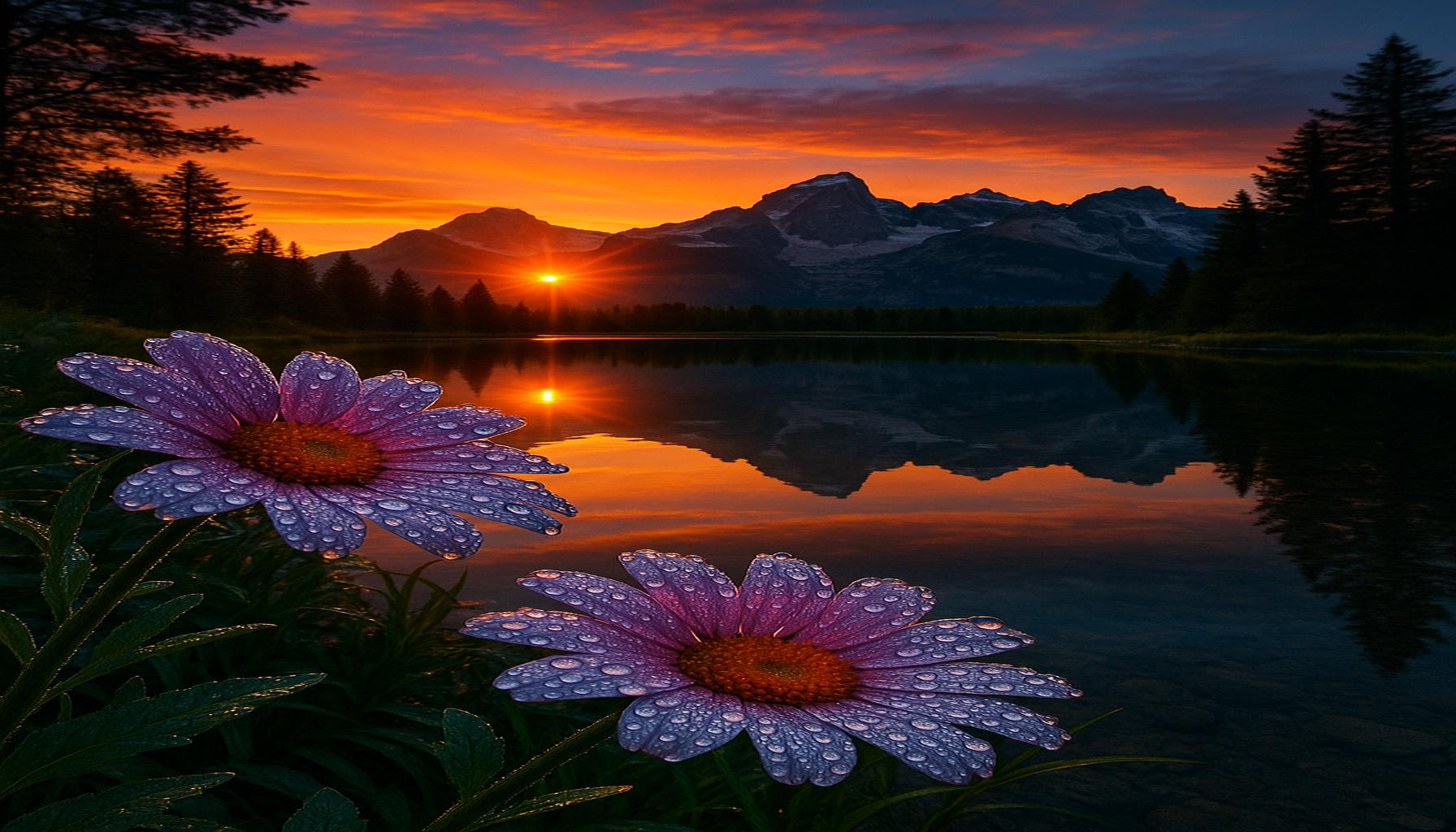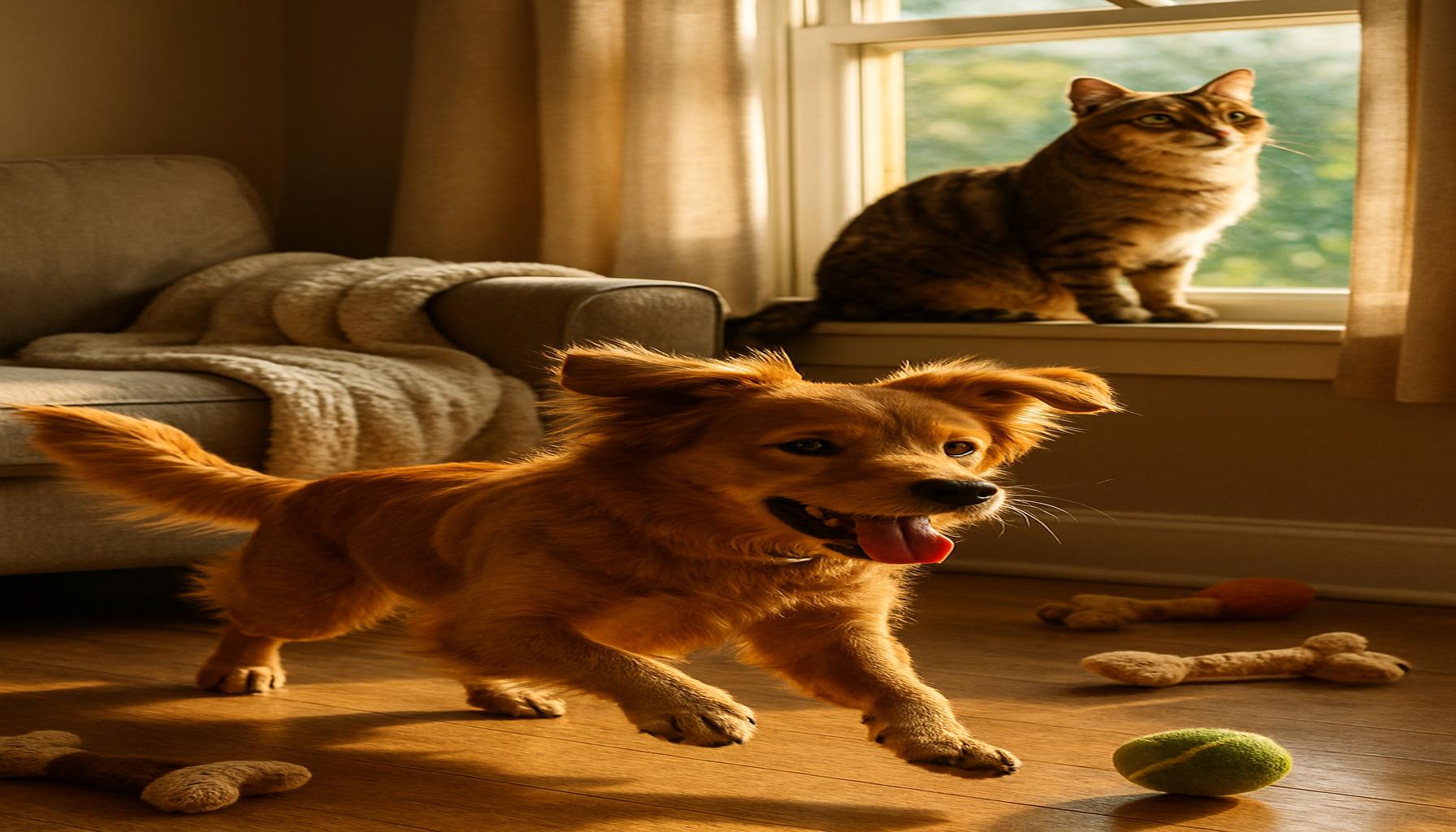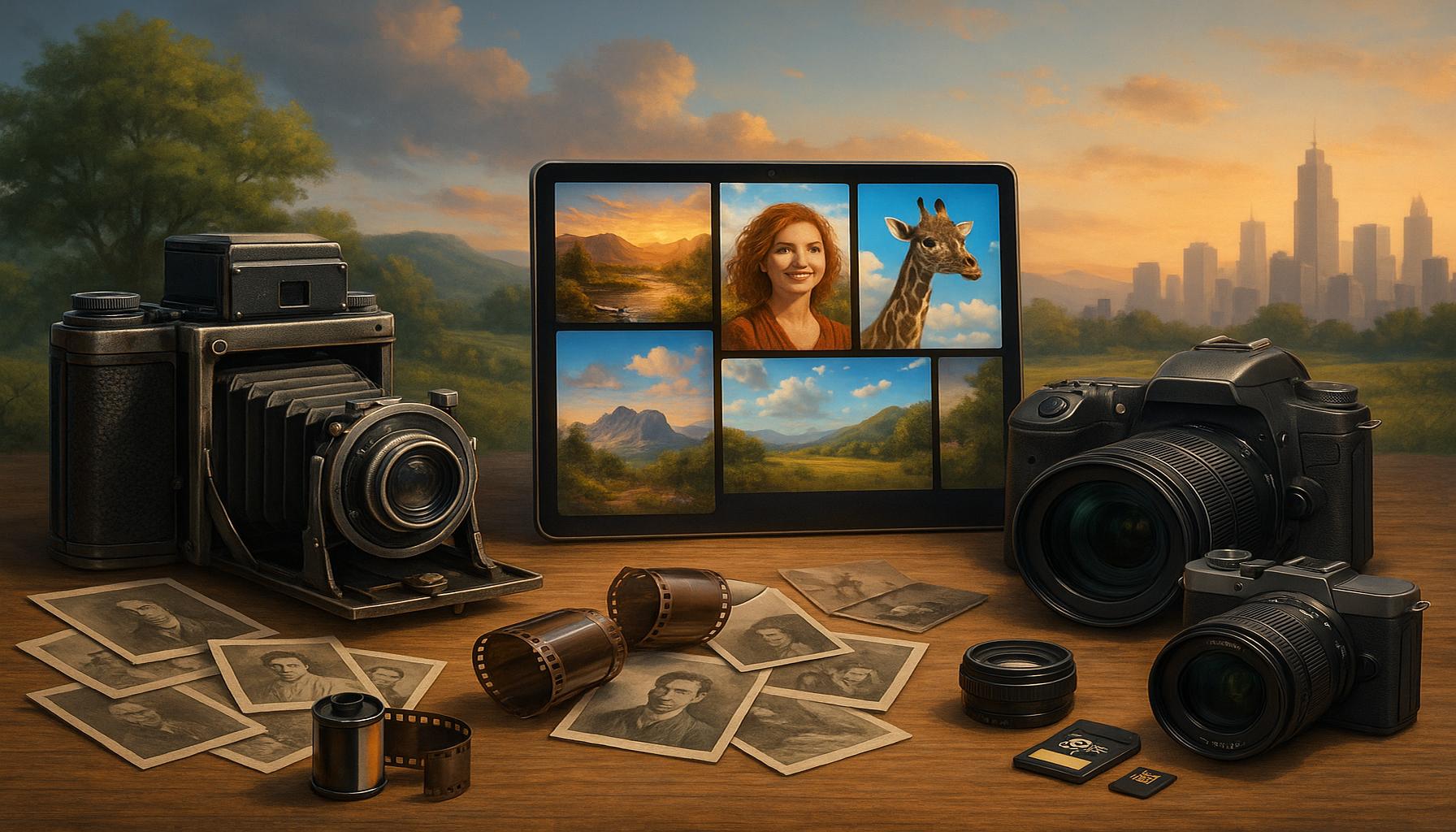Macro Photography: Exploring the Invisible Details of the Natural World
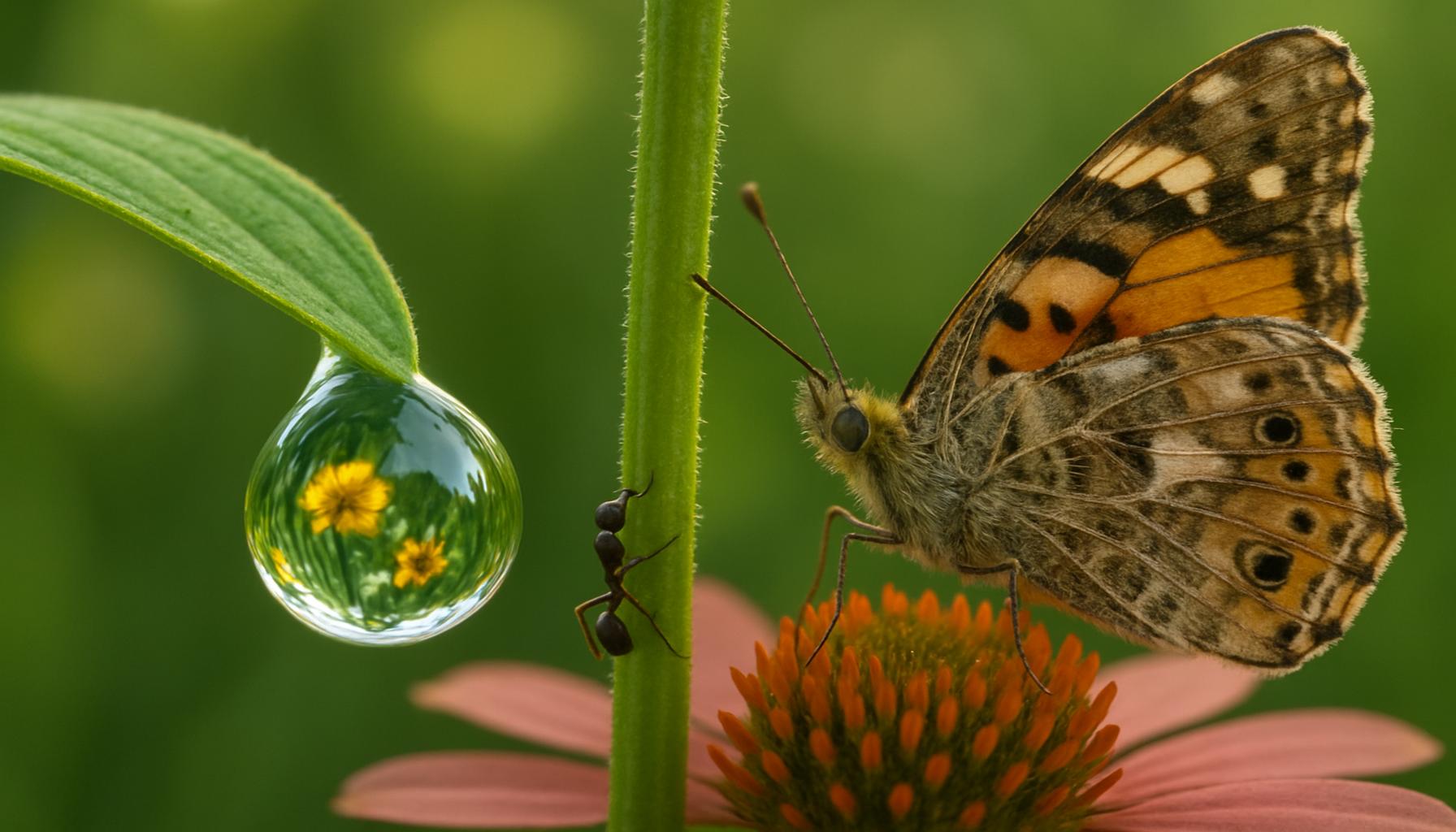
The Art of Capturing the Minute
Every day, we walk past intricate details that often go unnoticed. Macro photography allows us to dive into a world where the smallest elements reveal their beauty and complexity. This fascinating art form opens the door to explore the invisible wonders of the natural world.
What You Can Discover
In the realm of macro photography, subjects can be vast and varied, inspiring awe and curiosity. Here are some captivating examples of what you might uncover:
- Anatomy of delicate flower petals: Get up close to a blooming flower to reveal the intricate veins and textures that compose each petal. Every species flaunts a distinct palette that becomes a visual symphony through the lens.
- The intricate patterns on a butterfly’s wings: The delicate hues and patterns of butterflies transform into stunning artwork under magnification, showcasing the genes that define their genetics and beauty.
- Water droplets showcasing a miniature universe: A simple droplet can encapsulate its environment, creating a dreamy effect often unnoticed by the naked eye. Reflection and refraction are revealed, illustrating nature’s artistry.
- The fuzzy textures of an insect’s body: Capture the minute hairs on a bee or the segmented body of an ant to highlight their unique adaptations, which play crucial roles in their survival and contribution to the ecosystem.
- Unseen details of everyday objects: Objects like leaves, rocks, or even fabrics take on an entirely new form under macro scrutiny, revealing patterns and textures that are rich with character.
Through the lens, ordinary scenes transform, revealing a new narrative. The beauty of macro photography lies not only in the visuals but also in the philosophy it inspires—closely examining minute details leads to a deeper understanding of our environment. It encourages us to appreciate the complexity and connectivity in nature that we often take for granted.
Why Dive into Macro Photography?
Macro photography compels us to slow down and appreciate the unnoticed, immersing us in the present moment. Here are a few reasons to explore this fascinating genre:
- A chance to capture the symmetry of nature: Observing intricate designs provides photographic opportunities that are both stunning and educational, enhancing our perception of the natural order.
- Enhance your photography skills: Working in macro requires a keen understanding of light, focus, and composition, helping photographers of all levels to refine their techniques.
- Encourage mindfulness and observation: This genre fosters an engaged outlook on life, teaching us to appreciate the beauty that often lies just beyond our immediate view.
Join us as we journey through this captivating world, celebrating the unseen beauty that surrounds us every day. Whether you are a seasoned photographer or a curious observer, macro photography invites everyone to look deeper and discover the stories that unfold at every scale.
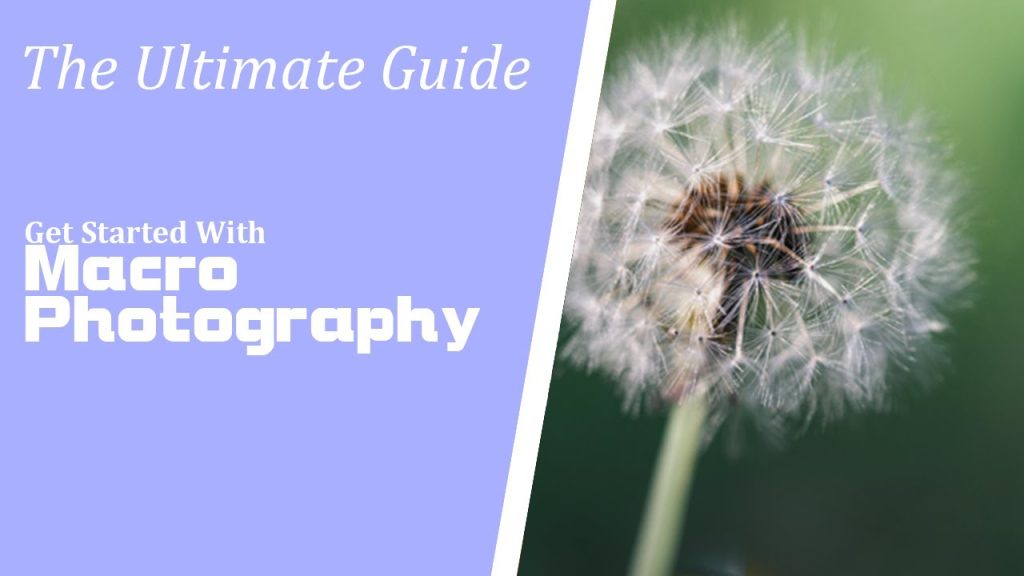
DISCOVER MORE: Click here to learn how creative writing fuels personal growth
The World Under the Lens
When stepping into the world of macro photography, you engage with an entire dimension that’s hidden within the mundane. This genre requires not only technical skill but also patient observation, as it brings forth captivating images that often go unseen. Upon magnifying the tiniest details, we become witnesses to a narrative that unfolds in surprising ways. But what exactly does this practice entail, and what are some essential techniques and tools that can help elevate your macro photography experience?
Essential Equipment for Macro Photography
Investing in the right equipment is crucial for anyone looking to take their macro photography skills to the next level. While a professional DSLR or mirrorless camera can significantly enhance your capabilities, it’s not the only way to start this journey. Here are some key tools to consider:
- Macro Lens: A dedicated macro lens is designed to focus on subjects at close distances, allowing for incredible detail and sharpness. Popular options include the Canon EF 100mm f/2.8L and the Nikon AF-S DX Micro NIKKOR 40mm f/2.8G, both revered for their ability to capture fine details.
- Extension Tubes: If you’re working on a budget, extension tubes can be a fantastic alternative, enabling you to use standard lenses for macro photography. These tubes fit between your camera body and lens, allowing for a closer focusing distance, thus amplifying your photography potential without breaking the bank.
- Tripod: Stability is critical when it comes to macro photography. Investing in a sturdy tripod can help eliminate camera shake, ensuring that you capture sharp images even in low-light situations where longer exposures are required.
- Lighting Equipment: Good lighting is vital to highlight the intricate details of your subject. Using ring lights or LED panels can provide a soft, even illumination that enhances the textures and colors within your frame.
Each piece of equipment can bring a new dimension to your work, allowing you to explore the hidden beauty of nature with greater clarity and detail. Understanding how to use these tools will help you not only to capture stunning images but to delve deeper into the art and science behind macro photography.
Techniques for Capturing Impressive Macro Shots
Once you’ve equipped yourself with the right tools, the next step is to master the techniques that will yield the best results. Here are some essential tips for capturing remarkable macro images:
- Focus Stacking: When working with macro photography, depth of field can be shallow. Focus stacking allows you to take multiple images at different focus points and merge them in post-processing, resulting in a perfectly sharp image throughout.
- Utilize Natural Light: The beauty of outdoor macro photography lies in the natural light that varies throughout the day. Early mornings or late afternoons provide ideal conditions, allowing for softer shadows and exquisite colors.
- Experiment with Different Angles: Don’t be afraid to get creative with your composition. Changing your shooting angle can dramatically alter the image, revealing details that may be overlooked from a standard perspective.
By mastering these techniques and utilizing the right equipment, photographers can unlock the mysteries of the natural world, capturing stunning visuals that highlight the delicate intricacies of life often missed by the human eye.
| Feature | Advantages |
|---|---|
| Extreme Detail | Reveals intricate textures and patterns unnoticed by the naked eye. |
| Unique Perspectives | Offers a fresh viewpoint on familiar subjects, enhancing creativity. |
| Connection with Nature | Fosters a deeper appreciation for the smaller ecosystems that thrive around us. |
| Educational Impact | Raises awareness of biodiversity and environmental issues through stunning imagery. |
In macro photography, every click of the shutter can unlock a captivating narrative hidden within the natural world. With advancements in photography techniques and equipment, hobbyists and professionals alike are now able to capture these fine details—transforming mundane moments into breathtaking visuals that can leave a lasting impression. This genre invites viewers to witness a level of beauty that often go unnoticed, like the delicate veins of a leaf or the fine hairs on an insect.As a photographer delves deeper into macro photography, they harness various tools and methods to achieve stunning results, such as ring flashes for even lighting and extension tubes to manipulate depth of field. Whether focusing on the minute details of a dewdrop resting on a petal or illustrating the vivid colors of a butterfly’s wings, each image tells a story that encourages viewers to explore their surroundings more closely. With every photograph, one embarks on a journey to not only document these extraordinary details but also to awaken curiosity about the intricate world we inhabit.
DIVE DEEPER: Click here to discover the art of sustainable crafting
Mastering the Art of Macro Photography
Once you’ve grasped the foundational tools and techniques for macro photography, the next natural step is to explore the emotional and creative sides of this captivating genre. The real allure of macro photography lies not only in the technical prowess but also in the ability to convey stories through intricate details often overlooked in our daily lives.
Finding Inspiration in Nature
Mother nature is a treasure trove for macro photographers, teeming with subjects that vary by season and location. From dew-kissed spider webs reflecting soft morning light to vibrant flowers attracting pollinators, inspiration is often just a step outside your door. However, venturing into unique environments can elevate your macro photography to a new level.
- Urban Exploration: Cityscapes can yield surprising macro subjects. Look for moss growing in the cracks of pavement or the intricate patterns on urban insects like ants or butterflies. These urban ecosystems are both fascinating and often neglected, offering a contrasting backdrop to natural subjects.
- Exotic Locations: Traveling to diverse ecosystems can introduce you to breathtaking subjects, such as tropical flora or intricately designed insects. Countries like Costa Rica or Madagascar are particularly rich in biodiversity, providing countless opportunities for macro enthusiasts.
- Seasonal Changes: Different seasons bring unique transformations to the environment. In fall, the rich textures of decaying leaves or the last blooming flowers provide a canvas for exploration, while winter reveals frost patterns on barren branches or snowflakes’ intricacies.
These varied environments can help fuel your creativity and provide a rich backdrop for your macro photography journey.
Post-Processing and Finishing Touches
Post-processing plays a vital role in bringing your macro shots to life. Editing software such as Adobe Lightroom and Photoshop allows photographers to manipulate images effectively, enhancing the vibrancy and detail while maintaining a natural look. Here are a few important tips to optimize your macro images:
- Adjusting Exposure and Contrast: Fine-tuning exposure can bring out hidden details in shadowed areas. Adjusting contrast can add depth, making textures pop and enhancing the visual impact of your photograph.
- Color Correction: Correcting colors allows you to achieve a more accurate representation of your subject, which is particularly important in macro photography where colors can be intricate and subtle. Use the white balance tool to ensure natural hues.
- Sharpening Details: Applying sharpening selectively to focal points can enhance the minute textural details of your macro image, guiding the viewer’s eye to those critical elements that define your subject.
The right post-processing techniques can dramatically elevate your macro images, helping them convey the vivid beauty concealed within the natural world.
Sharing Your Work and Joining the Community
Macro photography also offers an exciting opportunity to connect with a community of like-minded enthusiasts. Sharing your work through social media platforms such as Instagram or photography-specific websites can lead to constructive feedback and inspiration. Here, hashtags such as #macro, #macrophotography, and #naturephotography can expose your work to a broader audience and help you discover new techniques and subjects from fellow photographers.
Participating in local photography clubs or online forums can provide invaluable learning experiences and help you stay motivated as you witness the collective creativity of others. Don’t hesitate to participate in local photo walks or workshops to refine your skills and gain new perspectives on the art of macro photography.
Embrace the challenge and satisfaction that come from the meticulous world of macro photography, allowing you to reveal the stunning intricacies of the natural world. In every image, there’s a story waiting to unfold, often right beneath the surface of what we see every day.
DISCOVER MORE: Click here to dive into creative techniques
Conclusion: The Unseen Beauty of the Macro World
In the realm of photography, macro photography shines as a unique lens through which we can explore and celebrate the invisible details often missed by the naked eye. By meticulously capturing the intricate textures, subtle colors, and minute organisms of the natural world, we not only deepen our appreciation for nature but also share compelling stories that resonate with audiences. As discussed, mastering the craft entails understanding essential techniques, harnessing the right gear, and employing powerful post-processing tools to enhance your imagery.
Your creative journey in macro photography can thrive through inspiration derived from various settings, whether urban scenes, exotic locales, or seasonal transformations. Each moment spent observing and photographing these tiny marvels invites you to slow down and embrace the beauty surrounding us. Furthermore, by connecting with a community of fellow enthusiasts, you can exchange ideas, seek guidance, and widen your perspective on this fascinating art form.
Ultimately, macro photography goes beyond technical skills; it evolves into a profound exploration of nature’s hidden wonders. As you embark on capturing these invisible details, remember that each photograph reveals a story bursting with color, life, and complexity. So grab your camera, step into the world of macro, and allow yourself to discover the extraordinary within the ordinary.
